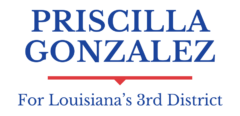The crime rate in Vermilion Parish, Louisiana, is relatively high. The annual crime rate is 119.6 per 1,000 population and includes both violent and property crimes. Violent offenses are substantially lower, at 3.503 per 1,000 residents, earning the area an A+ for violent crime. Property crime is a significant concern, with a rate of 109.0 per 1,000 residents, resulting in a F rating (CrimeGrade.org).
Proposed Solutions to Reduce Crime in Vermilion Parish
- Community Policing: Implementing community policing strategies can help build trust between law enforcement and residents. Increased police presence and engagement can lead to better intelligence gathering and collaborative problem-solving with the community.
- Improved Lighting and Surveillance: Enhancing street lighting and installing surveillance cameras in high-crime areas can deter criminal activities. Well-lit areas make it harder for criminals to operate unnoticed, and cameras can assist in identifying and apprehending offenders.
- Youth Programs: Investing in youth programs such as after-school activities, sports, mentoring, and educational workshops can provide positive alternatives to crime and reduce juvenile delinquency.
- Economic Development: Economic stability is closely linked to lower crime rates. Efforts to create job opportunities, support local businesses, and provide vocational training can reduce economic desperation that often leads to criminal behavior.
- Substance Abuse Treatment: Addressing substance abuse through comprehensive treatment programs can reduce drug-related crimes. Providing access to rehabilitation services and support groups can help individuals recover and reintegrate into society.
- Neighborhood Watch Programs: Encouraging residents to form neighborhood watch groups can increase community vigilance. These groups can work closely with law enforcement to report suspicious activities and promote safety awareness among neighbors.
Role of a Congresswoman in Lowering Crime Rates
A congresswoman can play a crucial role in addressing crime rates by:
- Securing Federal Funding: Advocating for and securing federal grants and funding for local law enforcement, community policing programs, and crime prevention initiatives.
- Legislative Support: Introducing or supporting legislation that addresses key issues such as gun control, drug policy reform, and criminal justice reform to reduce crime rates.
- Economic Development Initiatives: Promoting policies and programs that stimulate economic growth and job creation in the community, which can help alleviate the economic conditions that often lead to crime.
- Supporting Education and Youth Programs: Advocating for federal funding for education and youth development programs to provide positive opportunities and deter youth from engaging in criminal activities.
- Substance Abuse Programs: Supporting legislation that provides funding for substance abuse treatment and rehabilitation programs to address drug-related crimes.
- Community Engagement: Working with local leaders, law enforcement, and community organizations to understand the unique challenges faced by the community and to develop tailored solutions for crime reduction.
If elected to Congress, she can use her position and influence to push for federal grants and financing for local police enforcement and crime prevention programs. She has the ability to introduce and support legislation addressing crucial issues such as gun control, drug policy reform, and criminal justice reform, all of which are necessary to reduce crime rates. She can help generate job possibilities and improve economic conditions by advocating economic development measures, both of which are strongly associated with lower crime rates. She can also seek funds for education and youth development programs, as well as substance abuse treatment, in order to provide positive alternatives and assistance to at-risk populations, resulting in a safer community.
